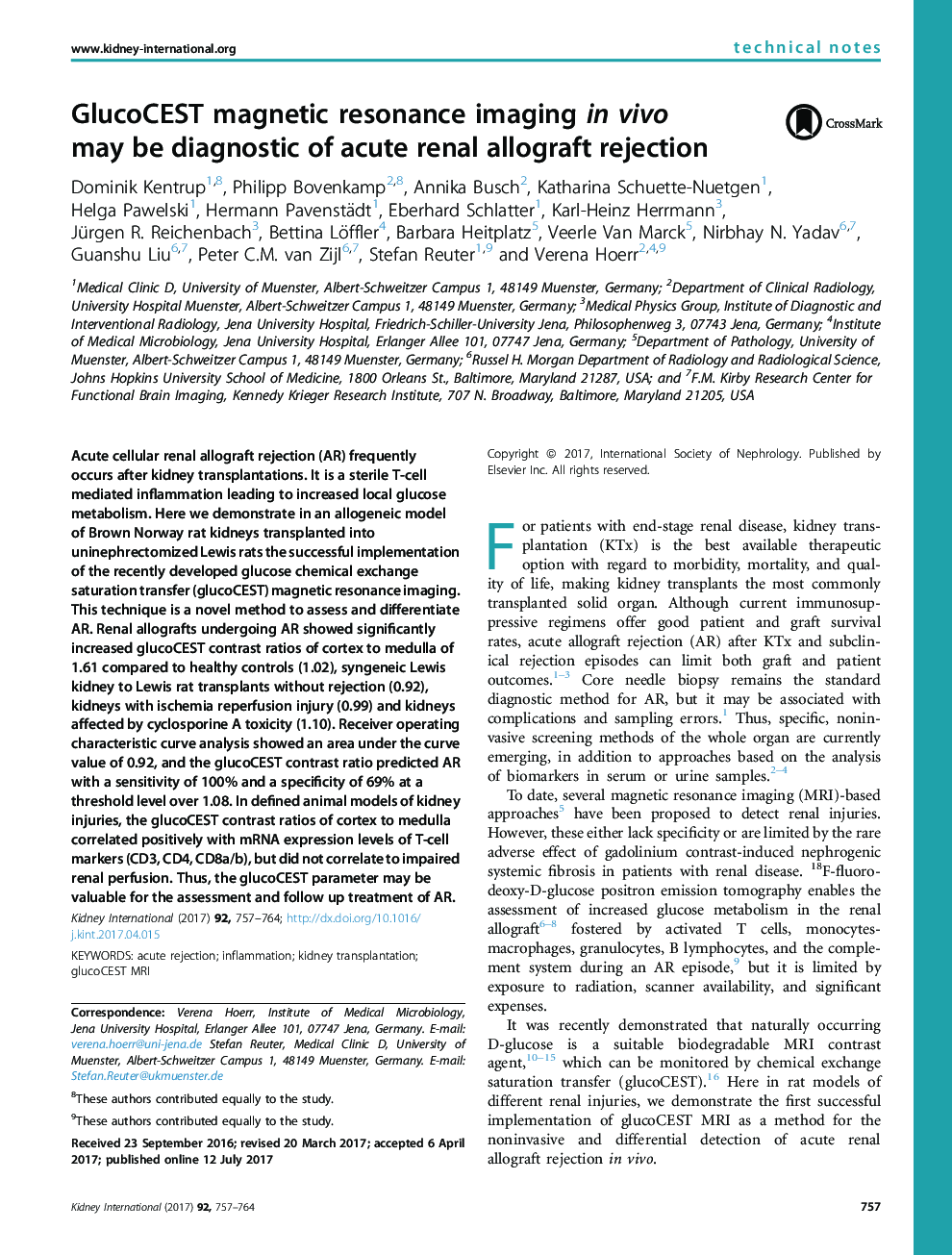| Article ID | Journal | Published Year | Pages | File Type |
|---|---|---|---|---|
| 5690965 | Kidney International | 2017 | 8 Pages |
Abstract
Acute cellular renal allograft rejection (AR) frequently occurs after kidney transplantations. It is a sterile T-cell mediated inflammation leading to increased local glucose metabolism. Here we demonstrate in an allogeneic model of Brown Norway rat kidneys transplanted into uninephrectomized Lewis rats the successful implementation of the recently developed glucose chemical exchange saturation transfer (glucoCEST) magnetic resonance imaging. This technique is a novel method to assess and differentiate AR. Renal allografts undergoing AR showed significantly increased glucoCEST contrast ratios of cortex to medulla of 1.61 compared to healthy controls (1.02), syngeneic Lewis kidney to Lewis rat transplants without rejection (0.92), kidneys with ischemia reperfusion injury (0.99) and kidneys affected by cyclosporine A toxicity (1.10). Receiver operating characteristic curve analysis showed an area under the curve value of 0.92, and the glucoCEST contrast ratio predicted AR with a sensitivity of 100% and a specificity of 69% at a threshold level over 1.08. In defined animal models of kidney injuries, the glucoCEST contrast ratios of cortex to medulla correlated positively with mRNA expression levels of T-cell markers (CD3, CD4, CD8a/b), but did not correlate to impaired renal perfusion. Thus, the glucoCEST parameter may be valuable for the assessment and follow up treatment of AR.
Related Topics
Health Sciences
Medicine and Dentistry
Nephrology
Authors
Dominik Kentrup, Philipp Bovenkamp, Annika Busch, Katharina Schuette-Nuetgen, Helga Pawelski, Hermann Pavenstädt, Eberhard Schlatter, Karl-Heinz Herrmann, Jürgen R. Reichenbach, Bettina Löffler, Barbara Heitplatz, Veerle Van Marck, Nirbhay N. Yadav,
